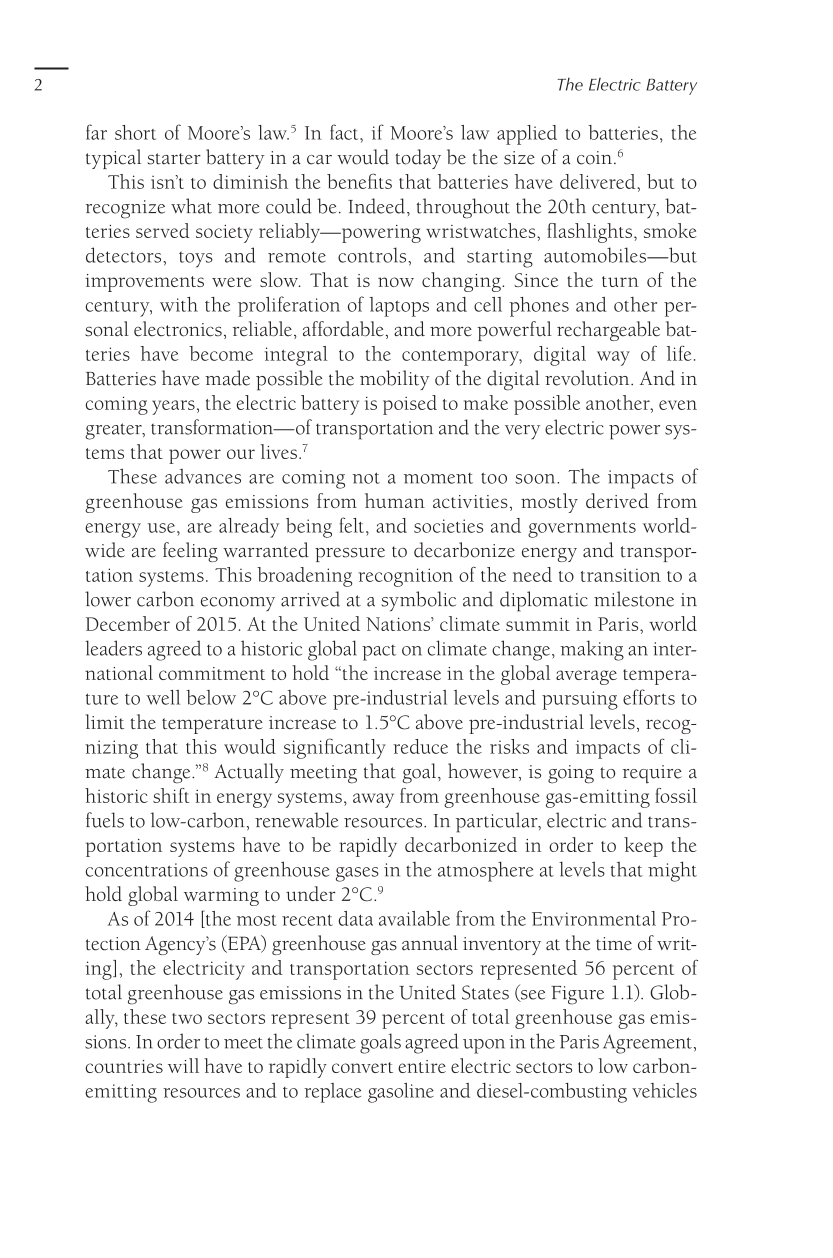2 The Electric Battery
far short of Moore’s law.5 In fact, if Moore’s law applied to batteries, the
typical starter battery in a car would today be the size of a coin.6
This isn’t to diminish the benefits that batteries have delivered, but to
recognize what more could be. Indeed, throughout the 20th century, bat-
teries served society reliably—powering wristwatches, flashlights, smoke
detectors, toys and remote controls, and starting automobiles—but
improvements were slow. That is now changing. Since the turn of the
century, with the proliferation of laptops and cell phones and other per-
sonal electronics, reliable, affordable, and more powerful rechargeable bat-
teries have become integral to the contemporary, digital way of life.
Batteries have made possible the mobility of the digital revolution. And in
coming years, the electric battery is poised to make possible another, even
greater, transformation—of transportation and the very electric power sys-
tems that power our lives.7
These advances are coming not a moment too soon. The impacts of
greenhouse gas emissions from human activities, mostly derived from
energy use, are already being felt, and societies and governments world-
wide are feeling warranted pressure to decarbonize energy and transpor-
tation systems. This broadening recognition of the need to transition to a
lower carbon economy arrived at a symbolic and diplomatic milestone in
December of 2015. At the United Nations’ climate summit in Paris, world
leaders agreed to a historic global pact on climate change, making an inter-
national commitment to hold “the increase in the global average tempera-
ture to well below 2°C above pre-industrial levels and pursuing efforts to
limit the temperature increase to 1.5°C above pre-industrial levels, recog-
nizing that this would significantly reduce the risks and impacts of cli-
mate change.”8 Actually meeting that goal, however, is going to require a
historic shift in energy systems, away from greenhouse gas-emitting fossil
fuels to low-carbon, renewable resources. In partic u lar, electric and trans-
portation systems have to be rapidly decarbonized in order to keep the
concentrations of greenhouse gases in the atmosphere at levels that might
hold global warming to under 2°C.9
As of 2014 [the most recent data available from the Environmental Pro-
tection Agency’s (EPA) greenhouse gas annual inventory at the time of writ-
ing], the electricity and transportation sectors represented 56 percent of
total greenhouse gas emissions in the United States (see Figure 1.1). Glob-
ally, these two sectors represent 39 percent of total greenhouse gas emis-
sions. In order to meet the climate goals agreed upon in the Paris Agreement,
countries will have to rapidly convert entire electric sectors to low carbon-
emitting resources and to replace gasoline and diesel-combusting vehicles








































































































































































































































